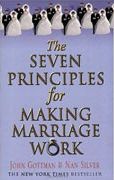 This is the fifth article in a series of posts I am writing about the Imago dialogue process. The Imago dialogue process is the core of Imago relationship therapy. It is the trunk of the Imago tree! I use Imago Relationship Therapy for counselling couples in Manchester because it works. If you are prepared to put in the effort to do things differently then Imago dialogue can give you a fantastic framework to connect with your partner instead of slipping into argument.
This is the fifth article in a series of posts I am writing about the Imago dialogue process. The Imago dialogue process is the core of Imago relationship therapy. It is the trunk of the Imago tree! I use Imago Relationship Therapy for counselling couples in Manchester because it works. If you are prepared to put in the effort to do things differently then Imago dialogue can give you a fantastic framework to connect with your partner instead of slipping into argument.
As a quick recap, I have already talked about the roles each partner takes in the dialogue process. One is the receiver and the other the sender. This means that one partner gets to talk and the other listens carefully using mirroring. The sender sends thoughts and feelings in chunks to the receiver and the receiver mirrors these back carefully checking that the mirroring is accurate with “did I get you?”. The receiver is then invited to say more with “is there more?”
Once the sender has finished talking about a topic then the receiver will summarize what (s)he heard endeavoring to capture the essence of what they heard. You can read more about any of those stages by checking out the relevant article.
The next stage of the process is validation. This may sound like
“you make sense, and what makes sense is…….”
A variation of this may be “I understand that you …given that….”. Let’s have a look at why validation is important in a relationship.
Go back to your childhood and think about how many times you were invalidated as you grew up. Since training in Imago Relationship therapy how I validate my own children has come into my awareness very clearly and I have a great example of what happens to kids on an almost daily basis. Let me set the scene. I’m at home on a winter’s day, the heating is blasting out and I’m feeling rather toasty warm. My five year old daughter turns round to me and says “Daddy, I’m going to put my jumper on, I’m cold”. My brain starts to work and parent mode clicks in. My thought process lines up the next sentence that I need to send to my daughter. I’m warm, in fact I’m rather hot so she must be hot too – it’s obvious, she has got how she feels completely wrong! The sentence is all lined up….”you’re not cold, you’re hot and so you’re not putting your jumper on”.
Fortunately I’m now more aware of validation and I’m starting to realise that I am me and other people are other people. This means that it’s perfectly possible for my daughter to be cold when I am hot…go figure! I say “Ok darling if that’s what you want to do” and she is validated. This all happens in a tenth of a second and it shows how we naturally dismiss the feelings of our children and were dismissed by our parents when we were kids.
We also do this with our partners. Your partner is annoyed when you have the TV on loudly? How can they be, that’s how you like the TV so they must like it too! Your partner hates the dishes piling up around the kitchen? Impossible! You like it just fine!! I’m sure you’re getting the drift.
We are separate from our partners and so when they are expressing their feelings in the dialogue process about something they don’t like then by validating it you are recognizing that their frustration is legitimate and makes perfect sense.
It’s worth mentioning at this point that when we validate our partner it is not the same as agreeing with them. It’s about sending the message to them that they see the world differently from you and you get why they see it as they do.
If you want to read the original book, Getting the Love You Want: A Guide for Couples by Harville Hendrix, just click on the link to be taken to Amazon.
 When couples come for marriage counselling with me they are often struck by how different Imago Dialogue is to the way we normally speak to our partner. In this series of articles I intend to take each part of the Imago dialogue process and explain why it’s done in this way and how it can transform your relationship. Before I start the articles I want to acknowledge both Harville Hendrix, the founder of Imago Relationship Therapy and my trainer Sophie Slade, who has provided me with many of the metaphors that are included in these articles. Thanks to both of them for such brilliance.
When couples come for marriage counselling with me they are often struck by how different Imago Dialogue is to the way we normally speak to our partner. In this series of articles I intend to take each part of the Imago dialogue process and explain why it’s done in this way and how it can transform your relationship. Before I start the articles I want to acknowledge both Harville Hendrix, the founder of Imago Relationship Therapy and my trainer Sophie Slade, who has provided me with many of the metaphors that are included in these articles. Thanks to both of them for such brilliance. John Gottman, one of the authors of the book
John Gottman, one of the authors of the book 